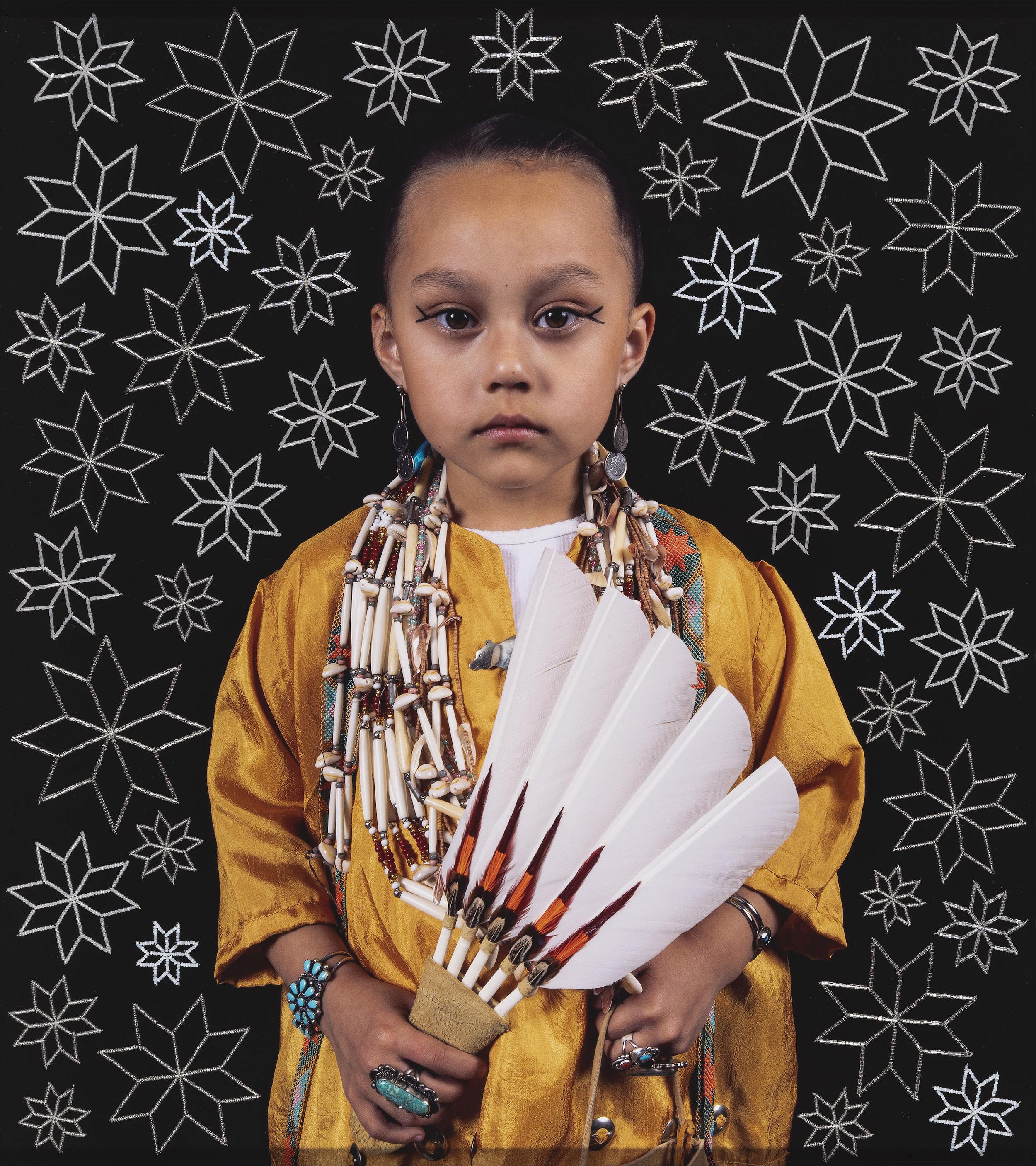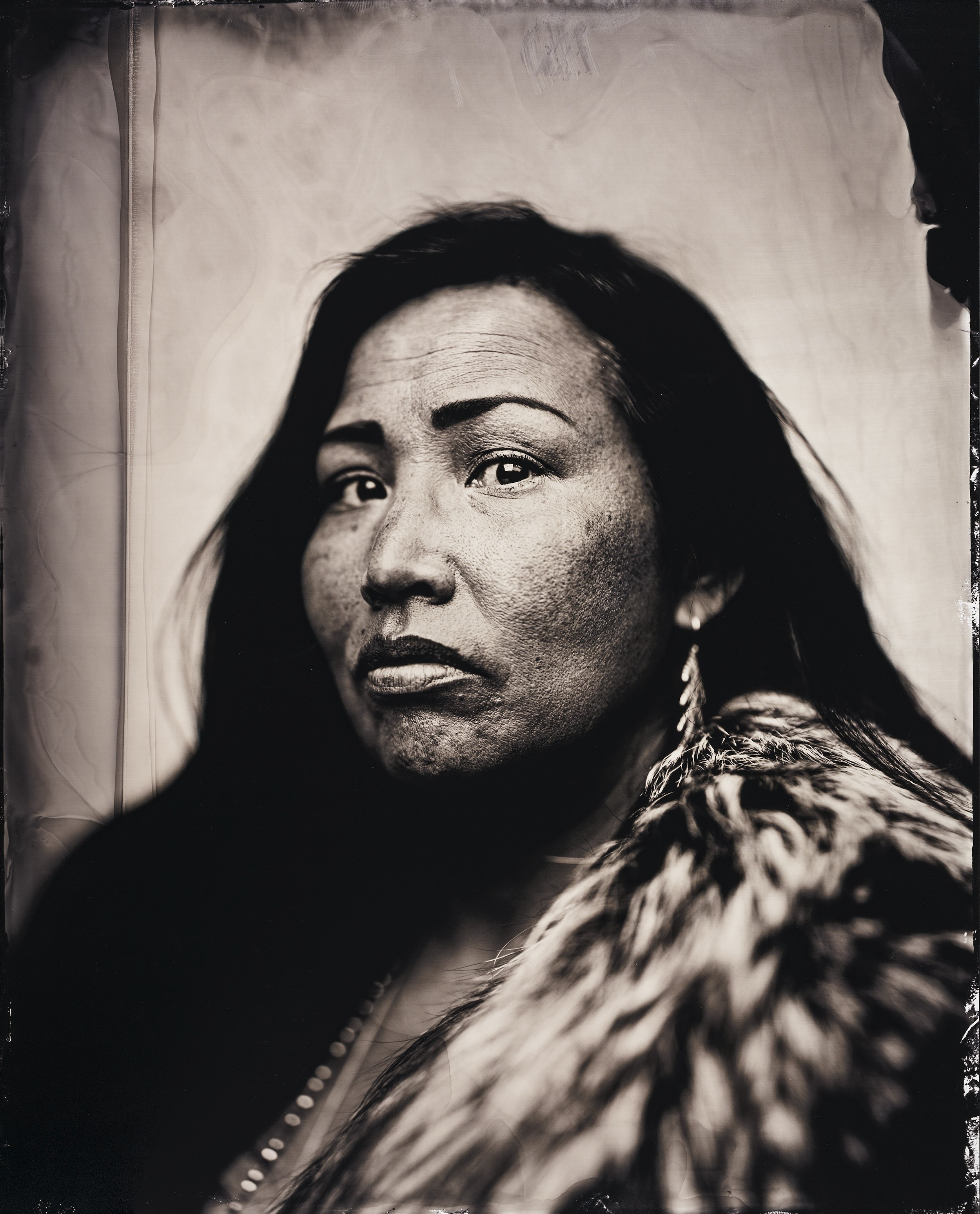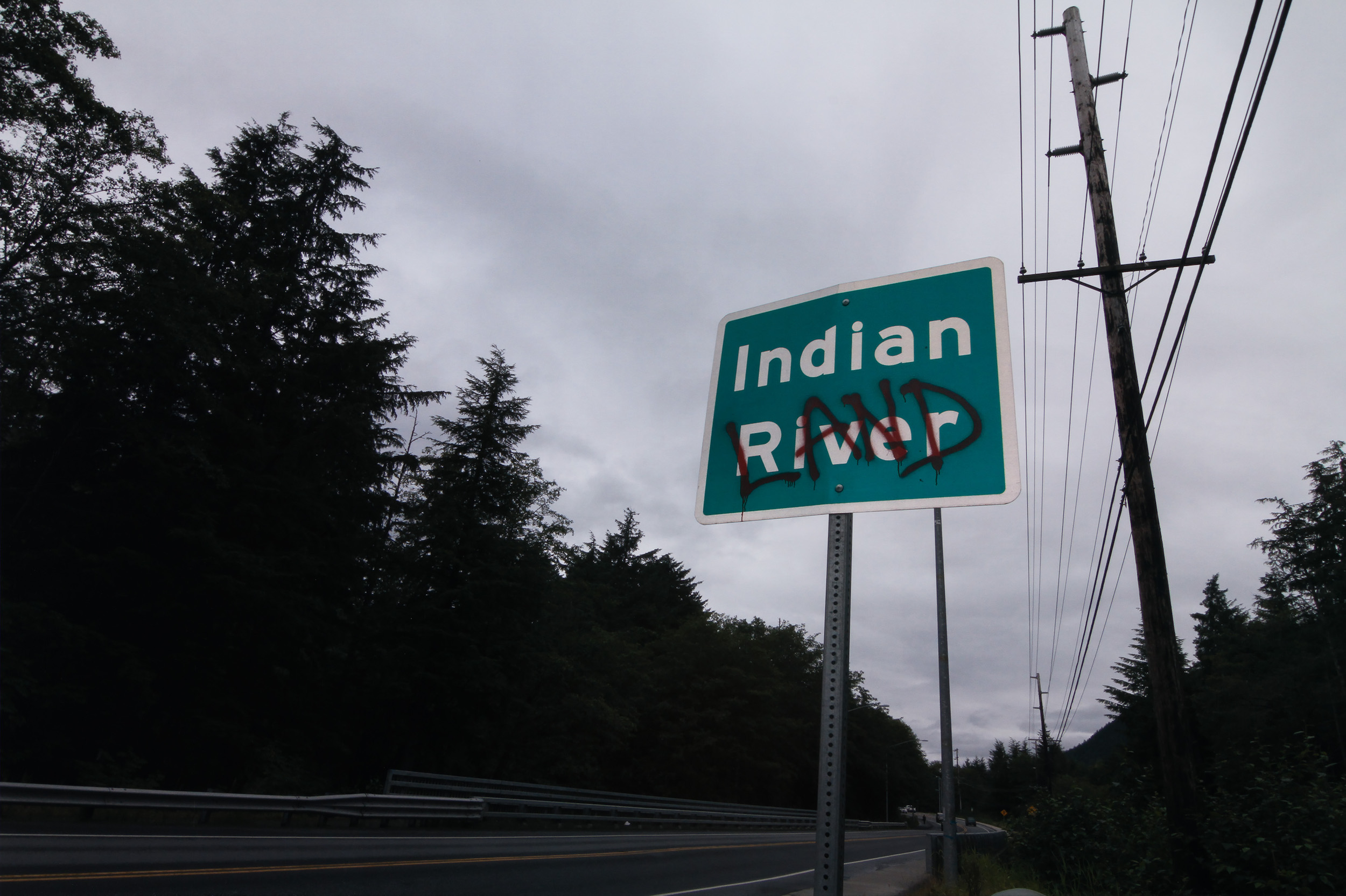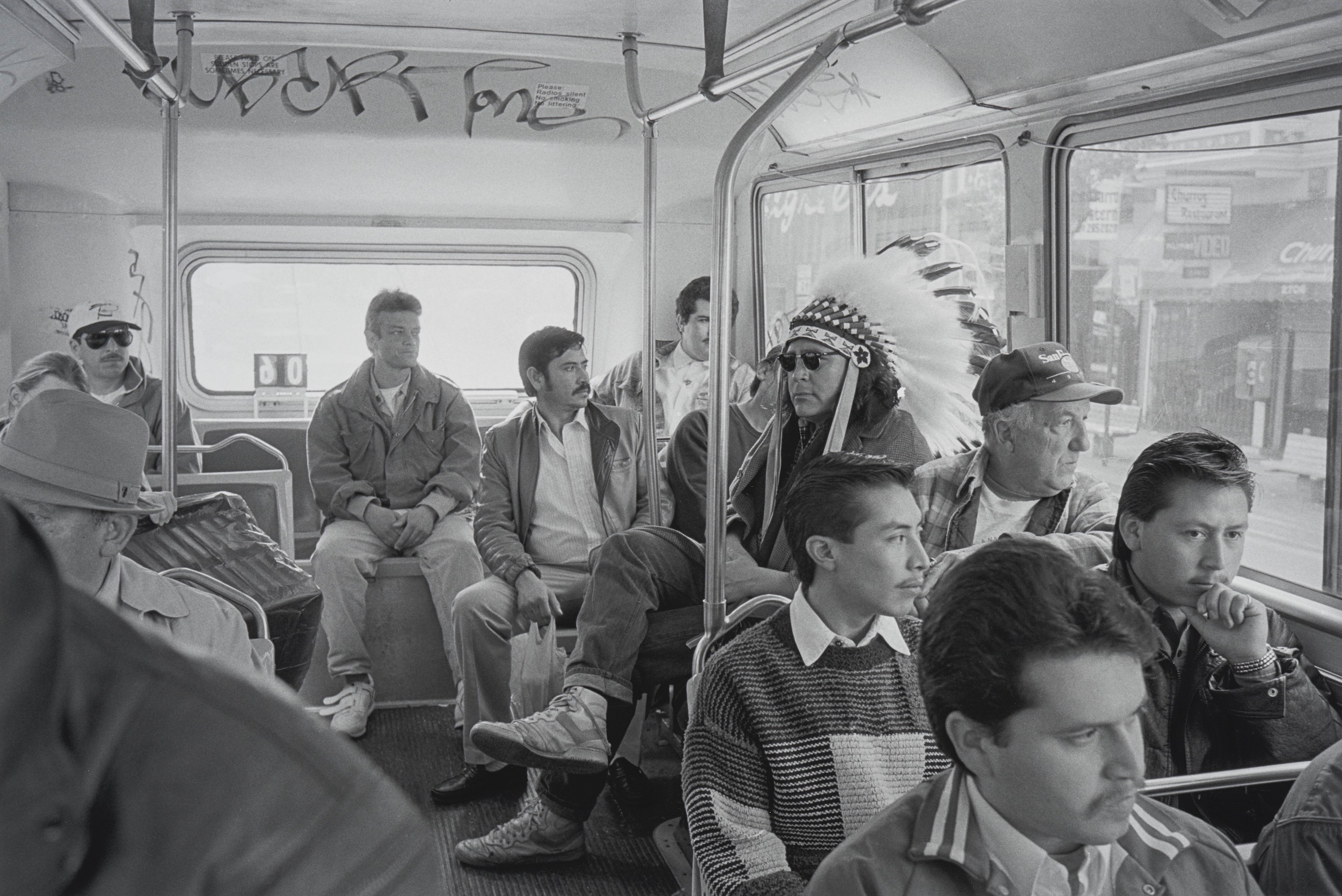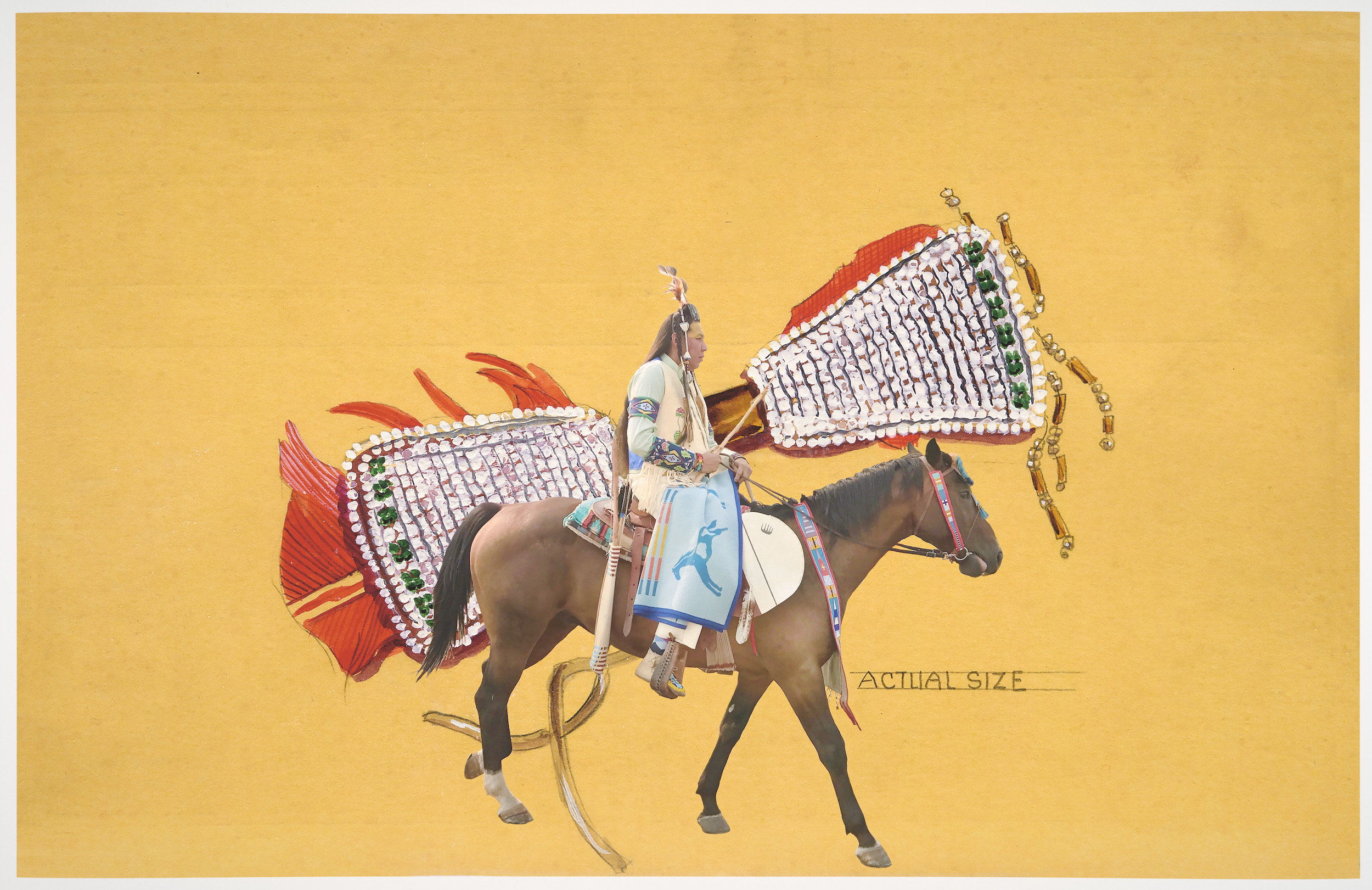(Ho-Chunk) (b. 1964), Peyton Grace Rapp, 2017, inkjet print with glass beads, AmonCarter Museum of American Art, Fort Worth, Texas, P2021.49 © Tom Jones
On show at Amon Carter Museum of American Art, the new exhibition places Indigenous voices “front and centre”
There are at least 576 federally recognised Indigenous Nations in the United States, with more currently suing the government for recognition and rights. Each tribe has its own visuality, a cultural identity that has historically been documented through invasive and exploitative lenses. In Indigenous American history, one can quickly locate photography’s dark past, where the camera’s function as a method of documentation doubles as a dangerous weapon: the ability to craft narratives, and to take control of them.
“Photography is a powerful tool to record and share our ongoing processes of survival, between ourselves and to a broader public. By revealing the broad nature of this work, we seek to expand sensitivity to these stories, understanding the breadth of contemporary Indigenous presence.”
“Historically, photographic representation of Indigenous cultures has been shaped by outsiders,” explains Will Wilson, a citizen of the Navajo Nation and head of photography at Santa Fe Community College. Wilson is one half of the curatorial team behind a new exhibition, Speaking With Light: Contemporary Indigenous Photography. The show opens at the Amon Carter Museum of American Art in Fort Worth, Texas, next week on 30 October. It presents the work of over 30 contemporary Native American photographers, including Jeremy Dennis, Nicholas Galanin, Sky Hopinka, Zig Jackson, Kapulani Landgraf, Dylan McLaughlin, Alan Michelson, Shelley Niro, Jolene Rickard, Wendy Red Star, Cara Romero, Hulleah Tsinhnahjinnie, a new commission by Sarah Sense, and more. A book of the same name will be published by Radius Books to coincide with the show. The first of this scale and focus, the group exhibition demonstrates how these Indigenous artists have flipped the focus, reclaiming their visual narrative. “Photography is a powerful tool to record and share our ongoing processes of survival, between ourselves and to a broader public,” Wilson adds. “By revealing the broad nature of this work, we seek to expand sensitivity to these stories, understanding the breadth of contemporary Indigenous presence.”
John Rohrbach, senior curator of photographs at the museum and co-curator of the show, says: “This exhibition was born of internal questions around how to interpret the Carter’s extensive holdings of photographs of Indigenous subjects, taken by white photographers. It was to make sure Indigenous voices were front and centre. I could bring 30-plus years of curatorial experience to it, but I am a US citizen of German- Danish ancestry. Will [Wilson] graciously joined the project in its early stages as a co-curator, and immediately played a fundamental role in shaping its themes.” Wilson, a photographer himself, describes the show as a “project [he has] been working on his whole life”.
“Speaking with Light is split into a prologue and three thematic sections: Survivance, Nation, and Indigenous Visualities. State to State – which is also the show’s prelude –acknowledges the “cultural sovereignty” and foundational agreements that led to the formation of what we now know as the United States. “Indigenous national representatives were forced to accept unjust terms for their land,” Wilson explains. “We present an image based through-line of this history.” The section features Wilson’s tintype portrait of present-day Oklahoma state senator Enoch Haney, bridging national history with contemporary Indigenous leadership.
In the second section, the Indigenous theory of ‘survivance’ is explored by artists such as Red Star and Galanin. Survivance is a term coined by Anishinaabe scholar and cultural theorist Gerald Vizenor to describe the resistance and presence of Indigenous people in the face of attempted cultural and physical genocide. In Red Star’s Catalogue Number 1941.30.1, the multidisciplinary artist incorporates archival prints of Indigenous items, revering the objects and honouring them as artworks; the past living on within the new.
In the final section, Nation, artists reflect on the multiplicity that is a community, asking us to consider “what it is to feel at home in a far without the Indian,” reflects Wilson. “American identity is often dependent on binary, oppositional tensions between self and other; without the Indian, there is no Cowboy,” he adds. “We have always been here, and continue to be. Many of the works bring this truth to the forefront, presenting a rupture, an alternative vision of the world that we must contend with.”
Wilson and Rohrbach describe the exhibition, and the subsequent book, as a “platform for truth-telling”. By collating the work of individual artists into a survey show, a new collective story unfolds. Wilson adds: “Telling our story and bearing witness is central to Indigenous cultures. This project is but one of many steps towards reconciliation.”
Speaking With Light: Contemporary Indigenous Photography is on show at the Amon Carter Museum of American Art from 30 October 2022 to 22 January 2023

